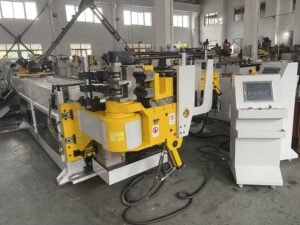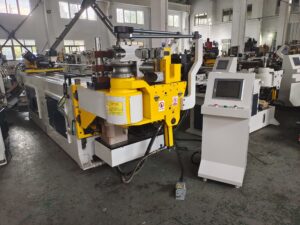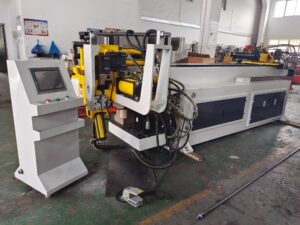How to Bend a Pipe with a Manual Pipe Bender: A Comprehensive Guide
In the world of mechanical engineering and fabrication, the manual pipe bender stands as an indispensable tool. Whether you’re a seasoned professional or a DIY enthusiast, mastering the use of a manual pipe bender can significantly enhance your piping projects.

Understanding the Manual Pipe Bender
Before diving into the bending process, it’s essential to familiarize yourself with the manual pipe bender. The most common types include:
- Fixed-Angle Benders: These are designed for specific, fixed angles.
- Variable-Angle Benders: Allow for bending at multiple angles, offering greater flexibility.
- Roll Benders: Ideal for bending longer sections of pipe into curves.
Understanding the type of bender you have will guide you in selecting the appropriate bending techniques and settings.
Preparing for Pipe Bending
Preparation is crucial to successful pipe bending. Here’s a step-by-step guide to ensure you’re ready to use your manual pipe bender:
- Select the Right Pipe: Choose the correct pipe material and size for your project. Common materials include steel, aluminum, and copper. Ensure the pipe is clean and free of debris.
- Mark the Bending Points: Using a measuring tape and marker, identify where the pipe will be bent. Accurate markings are essential for consistent and precise bends.
- Determine the Bend Radius: The bend radius is the minimum radius of curvature that the pipe can achieve without kinking. It’s calculated based on the pipe diameter. For example, a typical rule of thumb is to use a bend radius of three times the pipe diameter.
- Set Up the Pipe Bender: Adjust the bender according to the pipe size and desired bend angle. For variable-angle benders, set the die to the appropriate angle.
The Bending Process
Now that you’re prepared, it’s time to bend the pipe. Follow these steps for a successful bend:
- Position the Pipe: Place the pipe in the bender, aligning it with the die and ensuring it fits snugly. For pipes with larger diameters, you may need to secure the pipe using clamps or other fixtures.
- Begin the Bend: Gradually turn the handle of the bender to apply pressure to the pipe. Apply even and steady pressure to avoid sudden jolts that can cause kinking or damage.
- Check the Bend: As you bend the pipe, periodically check the angle and curvature. Ensure it matches your initial markings and desired bend radius.
- Complete the Bend: Once the pipe reaches the desired angle, carefully remove it from the bender. Allow it to cool if necessary, as some materials may require a cooling period to set the bend.
Final Inspection: Inspect the bent pipe for any kinks, deformities, or uneven bends. Make adjustments as needed.
Practical Tips for Bending Pipes
Here are some practical tips to improve your pipe bending experience:
- Practice on Scrap Material: Before bending your final pipe, practice on scrap material to get a feel for the bender and the bending process.
- Use Lubricants: Applying a lubricant to the pipe and bender can reduce friction and make bending easier.
- Take Breaks: If the bending process becomes too strenuous, take breaks to avoid fatigue, which can lead to mistakes.
- Maintain Your Bender: Regularly clean and maintain your bender to ensure it functions optimally.
Case Study: Bending a Copper Pipe for a Custom Water Feature
To illustrate the application of a manual pipe bender in a real-world scenario, let’s explore a case study involving a custom water feature project.
Project Overview: A local hobbyist decided to create a unique, handcrafted water feature for his garden. The centerpiece of the design was a winding copper pipe that would flow through a series of stone and wood elements.
Materials and Tools Required:
- Copper pipe (1/2 inch diameter)
- Manual pipe bender (variable-angle)
- Measuring tape
- Marker
- Lubricant
- Clamps (optional)
Step-by-Step Process:
-
- Planning and Design: The hobbyist sketched a design for the water feature, marking the points where the copper pipe would need to bend. He aimed for a natural, flowing curve that would seamlessly integrate with the natural elements of the garden.
- Preparation: He cleaned the copper pipe thoroughly to remove any oxidation or debris. Using a measuring tape, he marked the bending points on the pipe, ensuring they were spaced evenly to create a smooth curve.
- Setting Up the Bender: The hobbyist adjusted the variable-angle bender according to the first bend point. He set the die to a 45-degree angle, which he believed would be suitable for the initial curve.
- Bending the Pipe: Carefully positioning the pipe in the bender, he began to apply steady pressure. Using the lubricant, he ensured the pipe moved smoothly through the die. After completing the first bend, he checked the angle and curvature against his design.
- Continued Bending: Proceeding to the next marked point, he repeated the bending process. For more complex sections, he used clamps to secure the pipe in place, preventing it from slipping or shifting during bending.
- Final Adjustments: Once all the bends were complete, the hobbyist inspected the pipe for any kinks or deformities. He made minor adjustments where necessary, ensuring the pipe flowed seamlessly from one section to the next.
- Installation: The finished copper pipe was then integrated into the water feature, flowing gracefully through the stone and wood elements. The hobbyist added a small pump to circulate water through the pipe, creating a tranquil and visually appealing feature in his garden.
Click for more detailed information.




